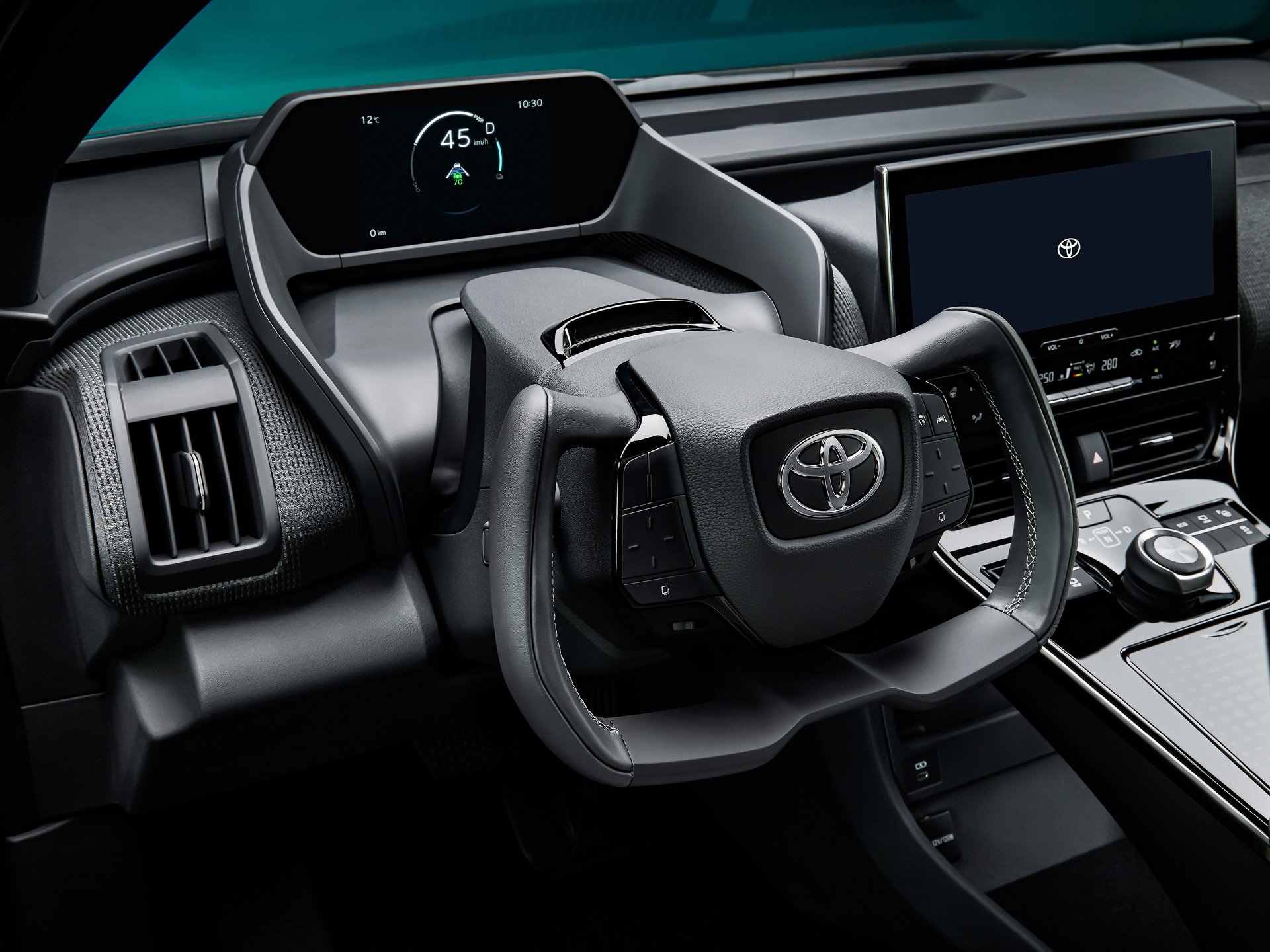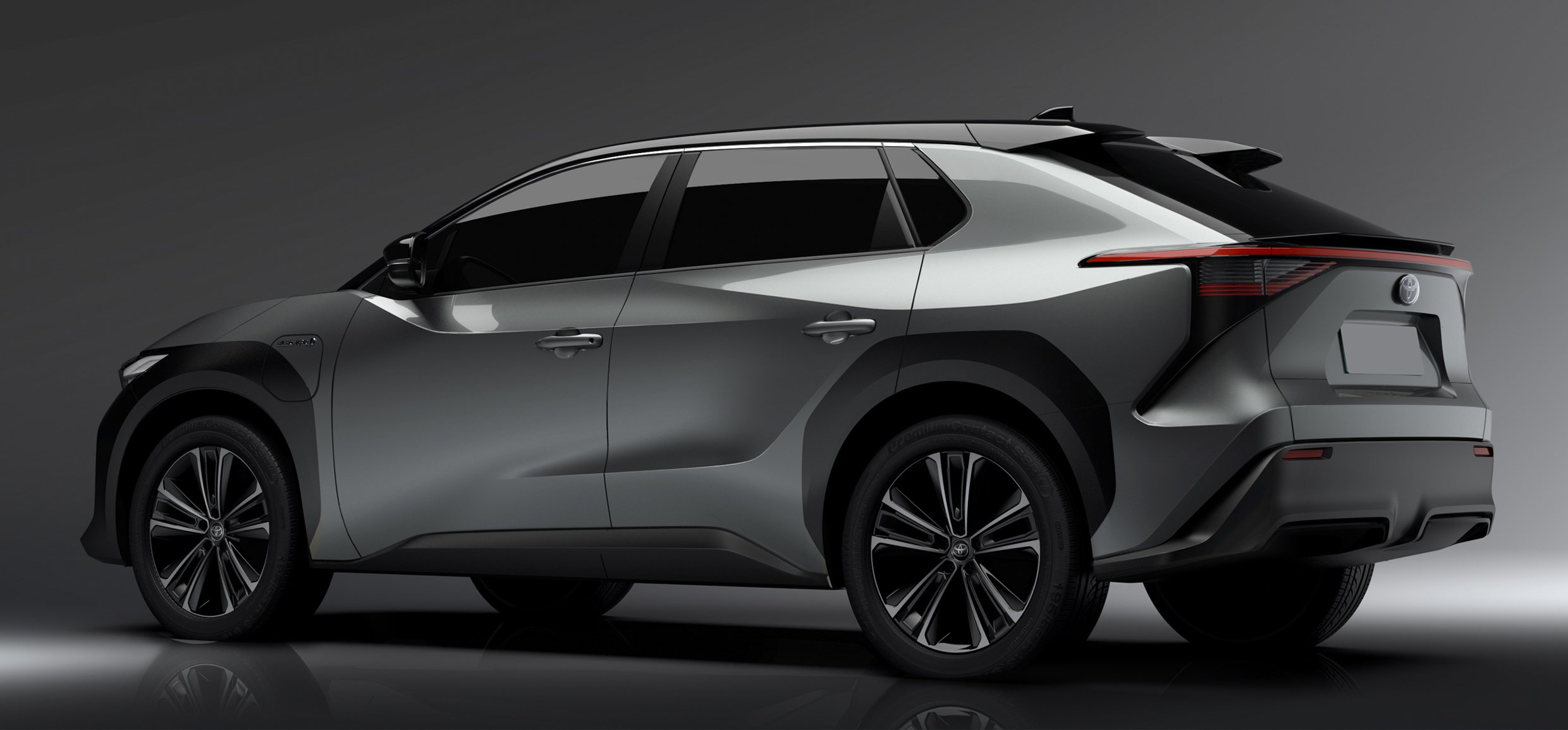2023 Toyota bZ4X Has a Yoke, And I’m Not Even Mad
By Edward A. Sanchez – Oct 29, 2021
Toyota today debuted the production version of its bZ4X crossover EV, complete with a (gasp!) optional yoke steering wheel. And you want to know something? I’m not upset about it.
If you’ve been following The Watt Car blog or podcast for any length of time, you’re probably well aware of my dislike for Tesla’s implementation of its “yoke” steering wheel on the refreshed Model S and Model X. Simply put, it was a solution in search of a problem.
What irked me so much about Tesla’s application of the design was that it was applied to a conventional, mechanical steering mechanism. Meaning that if you had to make a tight turn, it would inevitably mean crossed-up arms, or at the very least some awkward experiences turning the rectangular-shaped “wheel,” if you can even call it that.
Toyota, meanwhile, avoids the awkwardness inherent in the Tesla design, because Toyota’s yoke is affixed to a steer-by-wire system that limits the rotational motion of the wheel to 150 degrees to either the right or left, guaranteeing you won’t get your arms crossed up.
This is what Tesla should have done, but decided not to, whether by regulatory dictate or by choice.
Toyota’s forthcoming bZ4X is exactly what we’d expect from Toyota in an EV.
Even in the one other production implementation of steer-by-wire I’m aware of, the 2014-present Infiniti Q50 has a mechanical failsafe backup. Toyota has not given specific details yet of the bZ4X’s steer-by-wire system, which it calls “One-motion grip,” but we do know that it will initially only be offered in China, where laws pertaining to steering systems are presumably less strict or specific than the U.S. or Europe. Toyota said it plans to eventually offer the system in other markets, likely subject to regulatory approval.
Tesla should have held off on the yoke until it could bring a similar system to market, in which case the yoke form factor makes some sense. But this post is about the bZ4X, not my personal obsession and vendetta against Tesla’s yoke, so let’s continue. And in the interest of accuracy, despite what some other outlets may be claiming, this is technically not Toyota’s first EV, or even its first modern EV. There were in fact three generations of a RAV4 EV, the last of which had a Tesla-supplied battery pack, and Lexus has been selling an EV version of the UX crossover, the UX 300e, since 2020 in China and Europe. But certainly, the bZ4X represents Toyota’s first attempt at a mass-market, high-volume global EV.
Aside from the yoke, the bZ4X is thoroughly conventional in almost every way – pretty much what you’d expect of a Toyota. Dimensionally, it’s slightly larger than the current RAV4, with a 112.2-inch wheelbase and a 184.6-inch overall length. If you’re expecting Plaid-level acceleration, look elsewhere. 0-100 km/h (0-62 mph) acceleration is listed as 8.4 seconds for the 2WD model, and 7.7 seconds for the AWD model. Weight-wise, the bZ4X comes in at 4,233 pounds for the 2WD model and 4,420 pounds for the AWD model.
In terms of range, Toyota is claiming a WLTP range of 500 km (311 miles) for the 2WD version, and 460 km (286 miles) for the AWD version. Keep in mind WLTP estimates tend to be on the optimistic side for U.S. conditions, so we’re expecting EPA estimates to come in roughly 15% less.
Both variants have a 71.4 kWh battery pack and support up to 150 kW DC fast charging. Again, competent and competitive, but not earth-shattering.
Power output is 150 kw (201 hp) for the 2WD version and 160 kW (215 hp) for the AWD version.
The Toyota bZ4X will be the company’s first modern EV for the U.S. market.
If you’re thinking the bZ4X looks suspiciously like the photos that have been released of the Subaru Solterra, you’re not alone. In fact, Toyota acknowledges as much in its release on the bZ4X, saying, “The BEV-dedicated platform (first for Toyota) which is the basis of all systems was jointly developed with Subaru Corporation (Subaru).” So there you go.
Pricing has not yet been announced, but Toyota says the bZ4X will go on-sale globally in mid-2022. In terms of when we may see the yoke wheel stateside, who knows? Maybe never.
Aside from the unconventional steering system, there’s little that’s shocking, revolutionary, or really that exciting about the bZ4X. I know, I’ve been accused of being a “Toyota-hater” many times. That’s not the point I’m trying to make. Toyota has sold millions of cars and made billions of dollars playing it safe, and offering conventional, practical cars across the world. The bZ4X is no different. For those getting out of an ICE vehicle, and looking for something new, yet familiar, the bZ4X will likely meet their needs perfectly. But if you’re looking for a high-G thrill ride, this probably isn’t for you.
(Images courtesy Toyota)
- Podcast - Facebook - Google News - Twitter -













